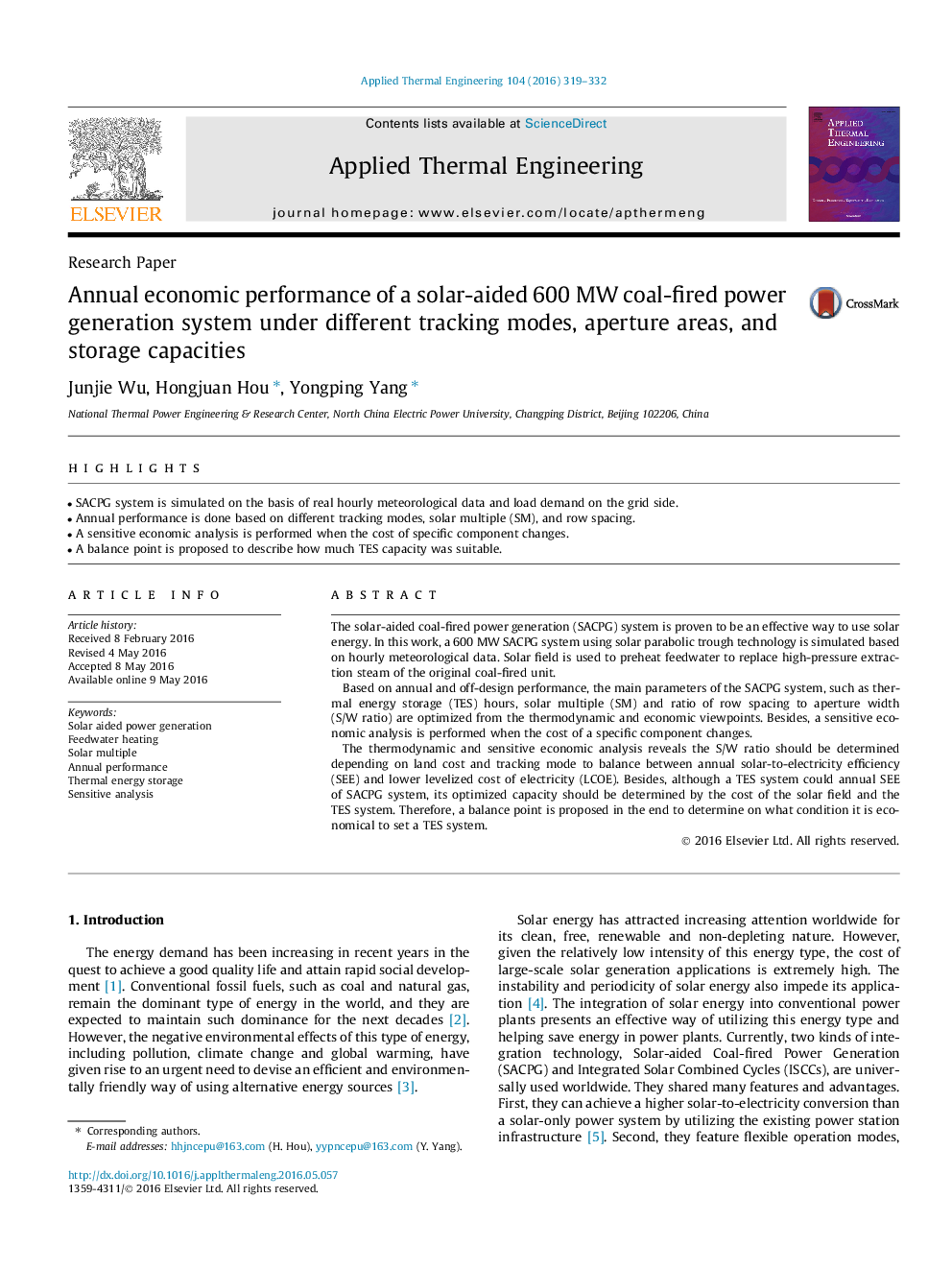| Article ID | Journal | Published Year | Pages | File Type |
|---|---|---|---|---|
| 644507 | Applied Thermal Engineering | 2016 | 14 Pages |
•SACPG system is simulated on the basis of real hourly meteorological data and load demand on the grid side.•Annual performance is done based on different tracking modes, solar multiple (SM), and row spacing.•A sensitive economic analysis is performed when the cost of specific component changes.•A balance point is proposed to describe how much TES capacity was suitable.
The solar-aided coal-fired power generation (SACPG) system is proven to be an effective way to use solar energy. In this work, a 600 MW SACPG system using solar parabolic trough technology is simulated based on hourly meteorological data. Solar field is used to preheat feedwater to replace high-pressure extraction steam of the original coal-fired unit.Based on annual and off-design performance, the main parameters of the SACPG system, such as thermal energy storage (TES) hours, solar multiple (SM) and ratio of row spacing to aperture width (S/W ratio) are optimized from the thermodynamic and economic viewpoints. Besides, a sensitive economic analysis is performed when the cost of a specific component changes.The thermodynamic and sensitive economic analysis reveals the S/W ratio should be determined depending on land cost and tracking mode to balance between annual solar-to-electricity efficiency (SEE) and lower levelized cost of electricity (LCOE). Besides, although a TES system could annual SEE of SACPG system, its optimized capacity should be determined by the cost of the solar field and the TES system. Therefore, a balance point is proposed in the end to determine on what condition it is economical to set a TES system.
